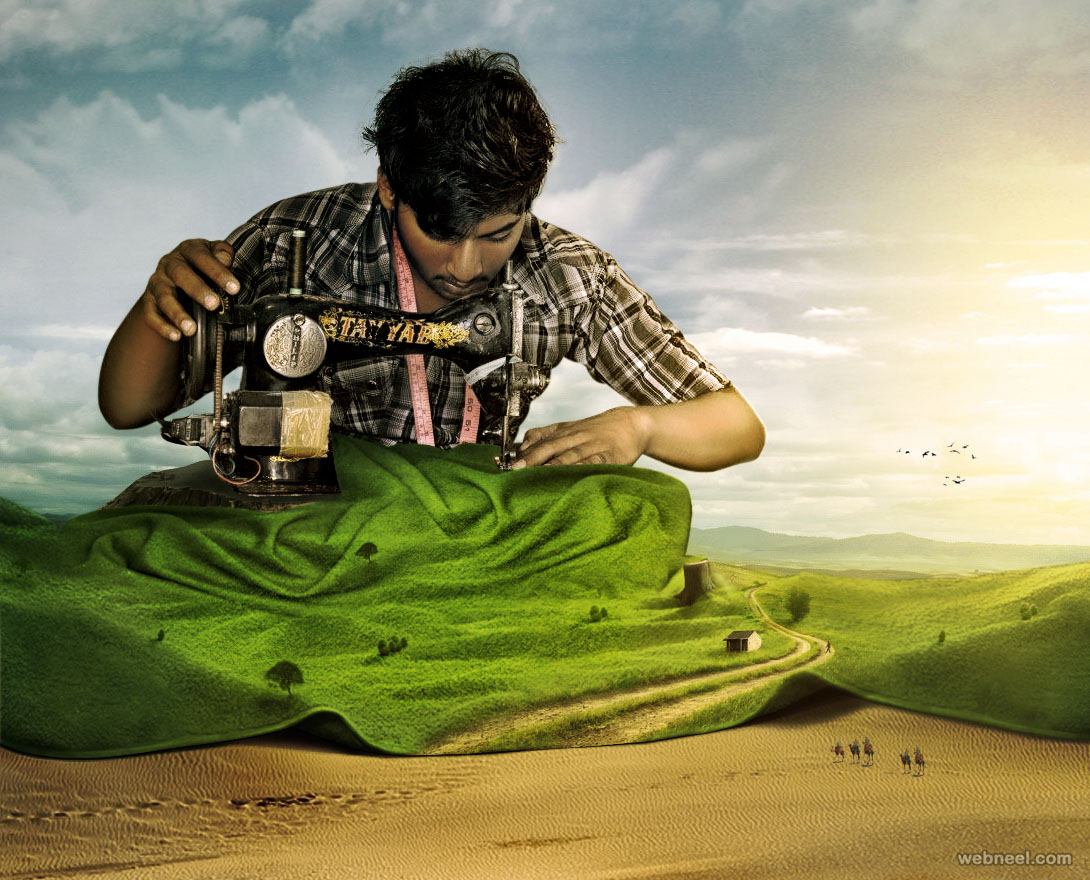The Magical Skill of Image Manipulation
Mastering the Boundaries
One of the most challenging aspects of skillfully manipulating images is controlling the boundary between the edited and original parts of a photograph. James Fridman, a talented digital artist, demonstrates his expertise in seamlessly merging elements. Upon close inspection, he is able to blend subjects in a way that hides any evidence of manipulation. For example, he has pasted both a blonde and brunette woman into corresponding areas of an image. By enlarging and cropping these sections, one can see the ragged border around the brunette indicates editing. In contrast, the boundary for the unmodified blonde appears natural and smooth. Fridman’s deft touch allows him to conceal boundary anomalies and seamlessly blend composited elements.

Revealing the Clues
While the most skilled image manipulators can remove all traces of altering, it takes a significant amount of time and effort. Not everyone has unlimited time to invest in perfecting every edit. Therefore, there are often subtle hints that reveal if a photograph has been manipulated, especially if it involved merging multiple source materials. Factors like inconsistent lighting, perspective, image quality can unintentionally disclose edits. For example, composited elements may have differing contrast levels, giving away that they came from separate contexts. Another telltale sign is uneven perspectives, exposing that subjects were pasted from divergent angles. Scaling images up or down during manipulation can cause noise and detail mismatches between areas. Carefully analyzing grain, edges and shadows using enhancement filters may unveil inconsistencies.
Examining the Evidence
When splicing items into a scene, certain steps commonly leave behind detectable artifacts. Filling in empty areas frequently requires using cloning and context-sensitive tools, risking repetition of details upon close examination. For instance, a manipulated landscape could have an identical patch of trees or cloud formations if reused without variation. Merging faces also presents challenges, as it is easier to paste the features while keeping existing hair intact rather than blending the composite seamlessly. Thus, scrutiny around blended hairlines may expose inconsistencies. Overpainting and shadows painted by hand often appear too dark or light compared to surrounding tones. Brushstrokes or blurriness near blend zones can also give away manipulation attempts. Overall, a trained eye focused on these common indicators has the potential to discern when images have been composited from various sources.
The Fine Art of Fridman’s Edits
James Fridman stands out as a master of subtle and seamless image manipulation through his deft touch and attention to microscopic details. While most manipulations inevitably introduce some detectable artifacts, Fridman is able to conceal anomalies and leave viewers questioning if changes even occurred. He demonstrates an uncanny ability to synchronize factors like lighting, perspective and image quality across composited elements. Fridman also avoids telltale traces from cloning or filling techniques through meticulous care in blending zones. Even magnifying his work reveals natural-looking boundaries devoid of the raggedness typical of lesser edits. His finesse allows creations to appear candid snapshots rather than meticulously manipulated constructions. Fridman has elevated image alteration to an art form through concealing the seams between real and imaginary with peerless precision.
The Story Beyond Pixels
Beyond technical virtuosity, Fridman infuses deeper meaning into his creations. Rather than solely showcasing manipulative prowess, he crafts visual narratives exploring relatable themes. One series merged family snapshots with fantasy elements to symbolize holding onto childhood wonder even as adults. In other pieces, Fridman addresses social issues by seamlessly blending situations. For instance, he combined photos of public figures to visualize ending racial segregation or bringing political opponents together. These impactful stories told through subtle edits highlight the potential of digital art to inspire and stimulate thought. Fridman demonstrates how skillfully manipulated images can transcend pixels to powerfully relay broader messages about the human experience.
Transforming Expectations
Since first gaining recognition around 2013, James Fridman has continued refining his craft and expanding his influential body of work. What began as humorous photoshop requests from social media followers evolved into thoughtful composite art. Along the journey, Fridman transformed preconceptions about image manipulation. Where casual viewers may see only altered surfaces, Fridman’s adept handling unveils sophisticated compositions conveying deeper reflections. Through concealing technical seams and infusing emotional substance, he sets the bar for digital art. Fridman proves subtle manipulation need not equate to superficial novelty but rather profound visual storytelling when applied by a master. He challenges audiences to look past the performative act and engage more meaningfully with the narratives beneath.
Pushing Creative Boundaries
Even among the most skilled image editors, James Fridman stands out for continually challenging limits. Having established himself as a leader blending reality and fiction, Fridman’s ongoing experiments push his abilities and the cultural understanding of digital art. Recent inventive series meld portraits with architecture, nature or abstract elements in novel ways. Fridman also collaborates across disciplines, designing album covers integrating music with surreal visions. Through persistent technical progression and creative evolution, he maintains an pioneering spirit. Fridman embraces each new project as an opportunity to discover fresh perspectives and stake new frontiers for the potential of thoughtful image manipulation. His boundless curiosity and refinements keep audiences anticipating what imaginative realms Fridman may illuminate next through his magically blended creations.
A Lasting Influence
Since emerging in the early 2010s, James Fridman has grown into one of the preeminent figures revolutionizing digital art. Where others saw a novelty craft, Fridman elevated image manipulation to a fine art through technical mastery and profound storytelling. His seamless blending techniques set the gold standard, while heartfelt narratives inspired audiences globally. Fridman pioneered visual exploring socio-political issues and psychological states through subtly altered realities. Artists and audiences alike now view imaginative manipulations as a means to stimulate deeper contemplation beyond initial shock value. Fridman’s legacy will undoubtedly influence generations to come both technically and conceptually. Having opened vast new creative vistas, his influence ensures image manipulation’s potential to engage and impact society will continue unfolding in innovative new forms.
